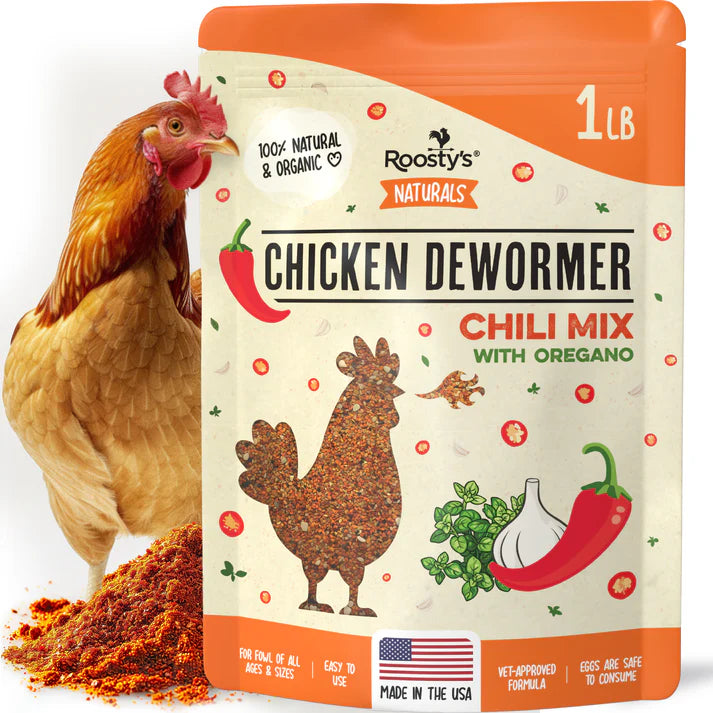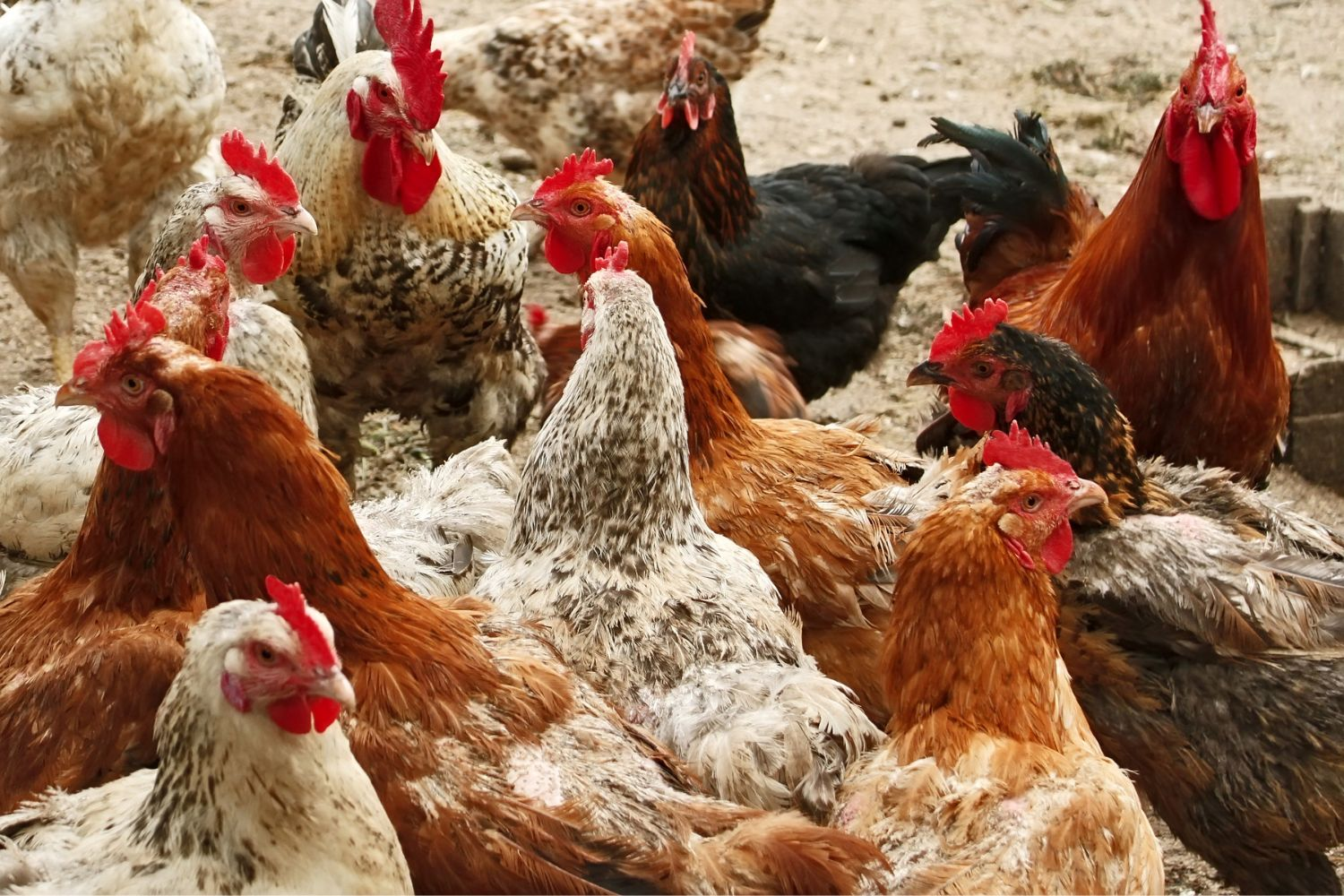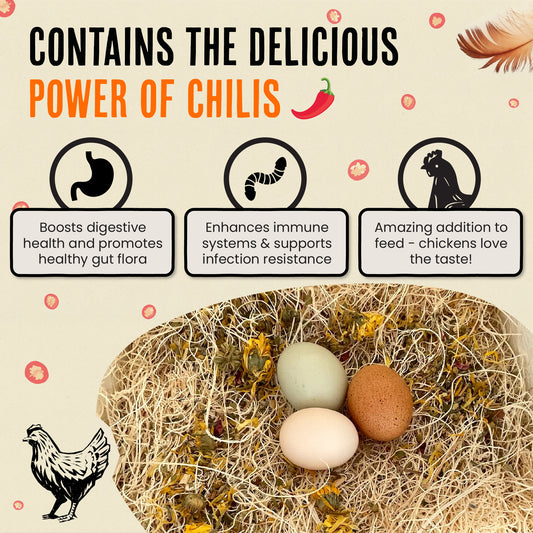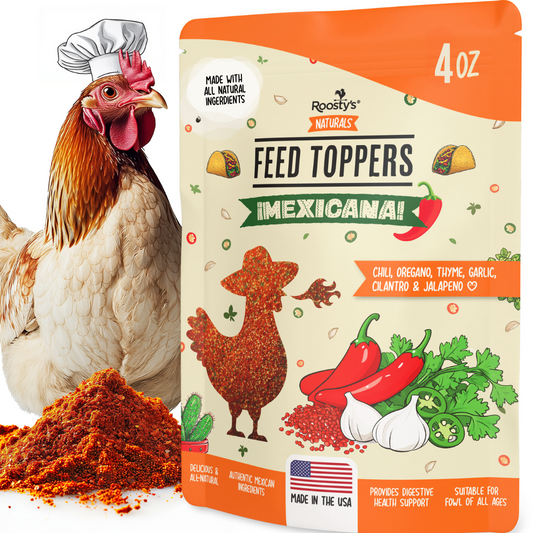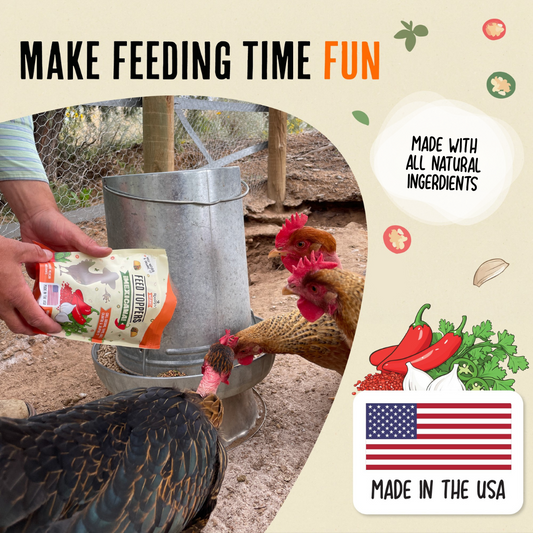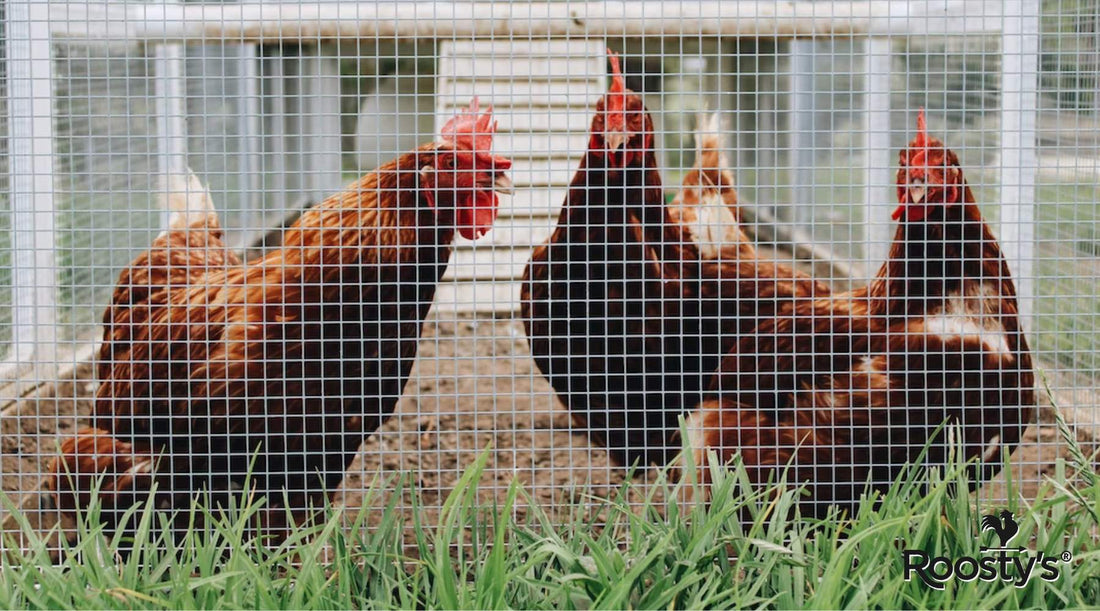
Nesting In Comfort: The Definitive Guide to Using Straw for Your Chicken Coop

The type of bedding you put down in your chicken coop is a surprisingly important decision. Get it right, and you'll have (relatively) fresh-smelling, happy chickens. Get it wrong, and you and your birds could experience some nasty problems!
Fortunately, this guide is here to help. It will teach you everything you need to know about using straw in your chicken coop. We will discuss how to lay bedding effectively and whether alternatives like hay are good options. By the end, you should feel confident about using straw in your chicken coop.
Don't worry if you can't immediately absorb all the information we discuss here. You can always come back to it later or learn it in chunks!
Choosing the Right Bedding: Straw or Hay For Your Clucking Companions?
Straw or hay? That’s the big question when it comes to chicken coop bedding. Both are popular options.
However, they are fundamentally different products, and as such, they have different pros and cons.
For instance, straw comes from the stalks of cereal crops. Farmers make it in vast quantities from wheat, oats, rye, and other grains. The basic structure is a stiff hollow tube that lacks nutrition.
Hay, on the other hand, is made from cut and dried plants (mainly grasses), baled for storage use. Therefore, the product retains its nutritional value, with farmers using it as feed when other food sources are scarce.
We will discuss how hay and straw vary below. Each has different characteristics, so which one you choose for your coop depends on your situation.
Nutritional Value
As discussed above, hay has a higher nutritional value than straw. Grain crops shuttle the vast majority of nutritional resources to the harvested part of the plant (which is absent from straw), while hay retains nutrients distributed throughout its structure.
A higher nutritional value sounds like a good thing. However, unfortunately, chickens can get upset stomachs from hay if they eat too much of it.
Straw contains fewer nutrients, so chickens are less likely to nibble on it. Moreover, even if they do, the lack of nutrition makes it less likely to upset their stomachs.
Cleaning
Hay is also considerably denser than straw and tends to compact more when chickens trample on it. Consequently, it can be harder to clean.
Straw scoops out quickly and will only compact after heavy soiling. Raking it out is relatively easy due to its rigid, tube-like structure.
Cost
Hay is also more expensive than straw because of its dual role as food. Therefore, if you want to minimize coop bedding costs throughout the year, stick with straw.
Comfort
Comfort is another factor in straw’s favor. Even though we can’t ask chickens which bedding type they prefer, just watching them suggests that they find straw more comfortable to walk over. The material creates a soft, cushioned surface, perfect for their little feet!
Insulation
But it isn't all bad news for hay. That's because it may offer more insulation than straw, making it suitable for chickens living in colder climates. Coops in the far north, where winter temperatures regularly drop below freezing, may benefit.
Hay's improved insulation comes from its density. It can trap more air pockets inside its structure, preventing heat loss.
Absorbency
Finally, hay may offer better absorbency than straw. It can hold more liquid, reducing odors and dampness compared to straw.
Because of this, hay may be better if you change your chicken coop bedding less frequently, giving you longer between muck-outs.
Benefits of Straw for Chicken Bedding
The last section looked at the different characteristics of straw and hay and how they apply to your chicken coop. This section looks at some of the specific benefits of using straw, some of which we already hinted at in the discussion above.
It’s Soft And Plush
One of straw's main benefits for coops is how soft and plush chickens can walk on it without developing nasty foot conditions or injuries and love nesting in it. It also lacks sharp edges or spikes that could cut or harm birds.
It's Easy To Clean
Straw also has the benefit of being easy to clean. You just rake it out of your coop, and it all comes up quickly. It's much easier to scoop out than sand or wood shavings because it tends to clump.
It's Compostable
As a natural product, straw is also compostable. While it might not be nutrient-rich, you can combine it with other garden waste to create fertile soil. It usually takes 6 to 12 months to break down before it's ready to use.
It's Dust-Free
Unlike many other bedding materials, straw also has the potential to be dust-free. You can get “low-dust” straws in which processors remove the small particles before bailing and packing them.
Low-dust bedding materials are essential for chickens. Small particles can enter their eyes and lungs, leading to various health issues, including mucus production and conjunctivitis.
It's Easy To Find
Another benefit of straw is how easy it's to find. Grain farmers produce it across the country in vast quantities every year.
Because of this, you can source it from pretty much anywhere – feed stores, local farms; you name it! Even if you live in a rural location, straw is never far away.
It Absorbs Moisture
Straw also absorbs moisture well (though it isn't quite as sponge-like as hay). As such, it should last more than a day in the chicken coop before it starts to smell.
You will still need to change straw regularly, though. It won't last a week in most coops.
It's Suitable For Nesting
Another benefit of straw is that chickens love nesting in it. Many find it an inviting material for egg-laying or just feeling plain broody! Chickens can snuggle in the straw, making a nice bowl-shaped indentation to keep warm and feel their best.
It's Cheap
Of course, straw is also popular for being exceptionally cheap. You can buy giant bales of the stuff for a few dollars, and they last for months!
It Offers Natural Insulation
Finally, straw offers chickens natural insulation. While it doesn't provide the same warmth retention as hay, it's still fairly good, making it suitable for keeping birds at a comfortable temperature in the winter, except in the most extreme cold snaps.
Using Straw in Your Chicken Coop to Create a Nesting Paradise

Okay, so enough of the benefits. We know that straw is incredible stuff for chicken coops already; time to focus on how to use it.
Step 1: Prepare Your Coop
The first step for using straw is to prepare the coop. Make sure:
- It’s clean
- You’ve removed any existing bedding material (such as wood shavings or sand)
- The coop isn’t damp or waterlogged
- You remove any droppings
Ideally, you want it to resemble a fresh, healthy environment.
Step 2: Choose A Quality Bedding Product
The next step is to choose your straw. As hinted above, not all products are the same.
Ideally, you want to buy straw from a reputable source. Some straws contain mold particles that can affect chickens’ health and well-being. Others have excessive dust which can harm your birds’ respiratory function.
Look for “reduced dust” or “dust-free” products and those treated for mold. Don’t automatically buy the cheapest straw available in your area. It may cause harm.
Step 3: Add Your Straw To The Coop
Once you have straw in your hand, the next step is to add it to your coop. Aim for two to four inches of depth to provide birds with enough material to nest comfortably. You can use more but remember it will add to the cost and time you spend mucking out.
You should also place straw inside your nesting boxes. This approach encourages chickens to spend more time in them and lay eggs.
Step 4: Check The Bedding Daily
After that, you’ll want to check your chickens’ straw bedding daily and remove any heavily soiled areas. The more chickens you have, the more soiling will occur.
Step 5: Compost Waste Bedding
Composting waste straw and chicken droppings is eco-friendly and lets you make new soil for your garden over time. Waste from a chicken coop can be an excellent way to make any vegetable patches on your property more productive.
Step 6: Make Sure Chickens Can Use Every Part Of The Coop
While laying straw, ensure your chickens can use every part of the coop. The bedding should be thick enough for them to access their perches, hanging toys, and pecking blocks. Fostering more natural behavior keeps them happy and increases their activity levels.
Step 7: Check Your Ventilation
You’ll also want to ensure your ventilation is up to scratch. While most straws don’t produce high dust levels, it's better to be safe than sorry.
Check openings in chickens’ living quarters. Make sure air can flow freely and that you remove any cobwebs. Also, consider upgrading your coop if it lacks proper ventilation.
Step 8: Watch Your Chickens
Finally, watch your chickens and see how they interact with straw bedding. Chickens will naturally forage and peck, so keep a close eye on them to see if their behavior is normal.
If you aren’t sure whether straw is the correct material for your birds, rotate it out occasionally and use hay or wood shavings instead. Observe them closely to get a sense of which makes them happiest.
Is Hay a Suitable Alternative for Chicken Bedding?
We already mentioned that hay is a possible alternative to straw for chicken bedding, but is it a suitable option?
The answer is that hay is a suitable chicken bedding material and many people use it. For instance, it's:
- Long-lasting
- Compostable like straw
- Resists mold
- Naturally insulates
- Absorbs birds’ waste material effectively
However, hay has some distinct drawbacks, namely the higher cost and nutritional value. We’re not saying hay is a bad material for chickens, but most owners see more benefits from using straw.
Discover the Best Bedding for Your Chickens
With that said, it's worth spending some time working out the best bedding for your chickens. Birds can have wildly different preferences, even within the same breed.
For instance, some chickens prefer hay to straw. It provides a cozy environment and keeps them feeling warm and comfortable in the winter.
Pine and aspen wood shavings are another option loved by some birds. Many products come pre-treated to reduce odor and absorb more waste.
You can also experiment with sand. Many owners like it because it makes it easy to scoop out droppings and doesn’t harbor parasites like lice.
Shredded paper and dried leaves are also options. Just be careful the paper doesn’t contain toxic inks that could harm your birds.
Tips for Using Straw or Hay in Your Chicken Coop
Congratulations on making it this far. You should now know the benefits of using straw and how to lay it in your chicken coop and nesting boxes.
This section explores some additional tips for using straw or hay in your chicken coop and how to keep your birds healthy with them.
Choose High-Quality Materials
Always choose high-quality products from brands you trust. Don’t buy bedding showing signs of spoilage or that smells moldy. Dirty hay or straw can harm your birds’ health, as discussed above.
Layer The Bedding Evenly
Don’t pile up straw in one corner and leave a sparse covering elsewhere. Aim for a depth of 2 to 4 inches across your chickens’ living quarters for optimal absorption.
Regularly Add Fresh Bedding
Leaving hay or straw in your chicken coop for too long will lead to unpleasant smells and could affect your birds’ health. To prevent this, regularly top-up existing bedding and replace it outright when necessary. Learn the different phases of smells the coop cycles through to determine when you need fresh hay or straw.
Rotate Bedding Materials
Rotating through bedding materials is a good way to discover which bedding types your chickens prefer. Swapping between hay, straw, or other materials can provide insights into what makes your chickens happiest.
Contented chickens:-
- Have a good appetite
- Display reduced signs of aggression
- Have healthy combs and wattles
- Produce eggs regularly
- Enjoy making various vocalizations
- Want to explore their environment
- Look bright-eyed
- Have a clean vent area (the orifice birds use to eliminate waste)
- Engage in healthy social interactions
- Have shiny feathers and look bright-eyed
Place Bedding Materials In Nesting Boxes
Placing hay or straw in nesting boxes helps to create a comfortable setting for brooding or laying eggs. The more attractive these spaces are, the more likely hens will use them!
Don’t be afraid to add fresh bedding to them daily. The more pleasant the environment, the more egg-laying becomes likely.
Compost Waste Materials
Composting chicken droppings, hay, and straw can help create new soil over time. You can then use this for your vegetable patch.
Check For Mold
Checking for mold is essential for a healthy coop. Mold can cause egg-laying problems, sick and dying offspring, gizzard blockages, leg abnormalities, and respiratory issues in affected chickens.
Signs of mold in your coop include:-
- A bad, musty smell
- Black or colored streaks on the coop floor or walls
- Sickly chickens or offspring
Wooden coops are at a higher risk of mold because their walls are more permeable. Fortunately, you can now get plastic versions that are easy to clean and don’t allow any moisture penetration.
Are There Any Problems With Straw Bedding For Chicken Coops?
While millions of people use straw bedding for chicken coops, it can cause problems if not managed correctly. Owners, for instance, can run into trouble when they fail to replace straw regularly.
Straw has limited absorbency and will eventually run out of capacity for more droppings. That’s why you should replace it most (if not every) day.
Straw is also prone to mold and spoilage, a process that can start as soon as it gets damp. Therefore, check any products you buy are dry and smell fresh. If they are musty, it could be a sign of fungal contamination.
Lastly, straw can be less durable than other materials, such as wood shavings. Therefore, it can involve more coop maintenance. This factor can partially offset the lower cost.
Common Mistakes to Avoid When Using Straw or Hay in Your Chicken Coop
Making mistakes when using straw or hay in your chicken coop could harm your birds and lead to some rather expensive vet bills! But, fortunately, you can avoid many of them. Here’s what not to do:-
- Allow hay or mold to get too moist. Excessive moisture can lead to infections.
- Fail to address pest infestations. Hay and straw can sometimes attract mites and may require treatments.
- Not respond to your chickens’ preferences. Failing to consider the bedding type they prefer.
- Use the wrong bedding materials in nesting boxes. Heavily soiled materials are uninviting for egg-laying hens.
- Use dusty bedding. Lots of particulate matter in the air can damage sensitive avian respiratory systems.
Transitioning Between Bedding Materials: How to Move from One to the Other
Switching between bedding materials for your chickens requires a little finesse. If you change too suddenly, it might spook your birds.
Start by assessing the current state of your bedding. Ask whether it's a good option given your coop size and number of birds. You might need to change it if it's heavily soiled within a few hours.
When transitioning to new bedding material, add it slowly. Begin with 90% original bedding and 10% new bedding and then increase the proportion of new bedding every time you change it. It should be like boiling a frog slowly – your chickens won’t notice,
Lastly, monitor your chicken’s health and give them time to adjust. Look out for any changes in behavior that might result from the new bedding.
Verdict: Choosing Straw Or Hay For Your Chicken Coop

So, is straw good for chicken bedding? The answer is a resounding “yes” – at least according to the evidence presented here. Some authors complain that straw can cause impacted crops, which is where the chicken’s pre-stomach becomes engorged with bedding material. But this same problem can occur with any bedding type if birds try to eat it. Overall, straw is an ideal bedding material used by thousands of chicken owners nationwide.
In the debate over straw or hay for chicken coop owners, straw appears to come out on top. However, it depends on where and how you keep your chickens. People living in colder climates with bigger budgets might prefer hay. Perhaps the best policy is to experiment with both!
FAQs
Can I use straw in chicken coop interiors?
You can use straw in a chicken coop as bedding. However, some experts believe chickens require litter, similar to cat litter, to absorb their droppings.
Can you use hay for chicken bedding?
Yes, you can use hay for chicken bedding. It's warmer and absorbs more moisture than straw but costs more and may encourage unwanted consumption due to its higher nutritive value.
Where can I get high-quality straw for chicken coop bedding?
We offer a range of high-quality straw products for chicken coops, helping you keep your birds healthy and happy throughout the year.
Does straw provide enough insulation for chickens during winter?
Straw provides some insulation for chickens during the colder months. However, it's not as effective as hay for keeping them warm.
How often should I replace straw bedding?
You should replace straw for chicken bedding every day. This approach keeps your chickens’ living quarters smelling fresh year-round.
Why do people use straw in chicken coops?
People use straw in chicken coops because it's an affordable agricultural byproduct. Its hollow core and soft outer layer give it cushioning properties that protect birds.
